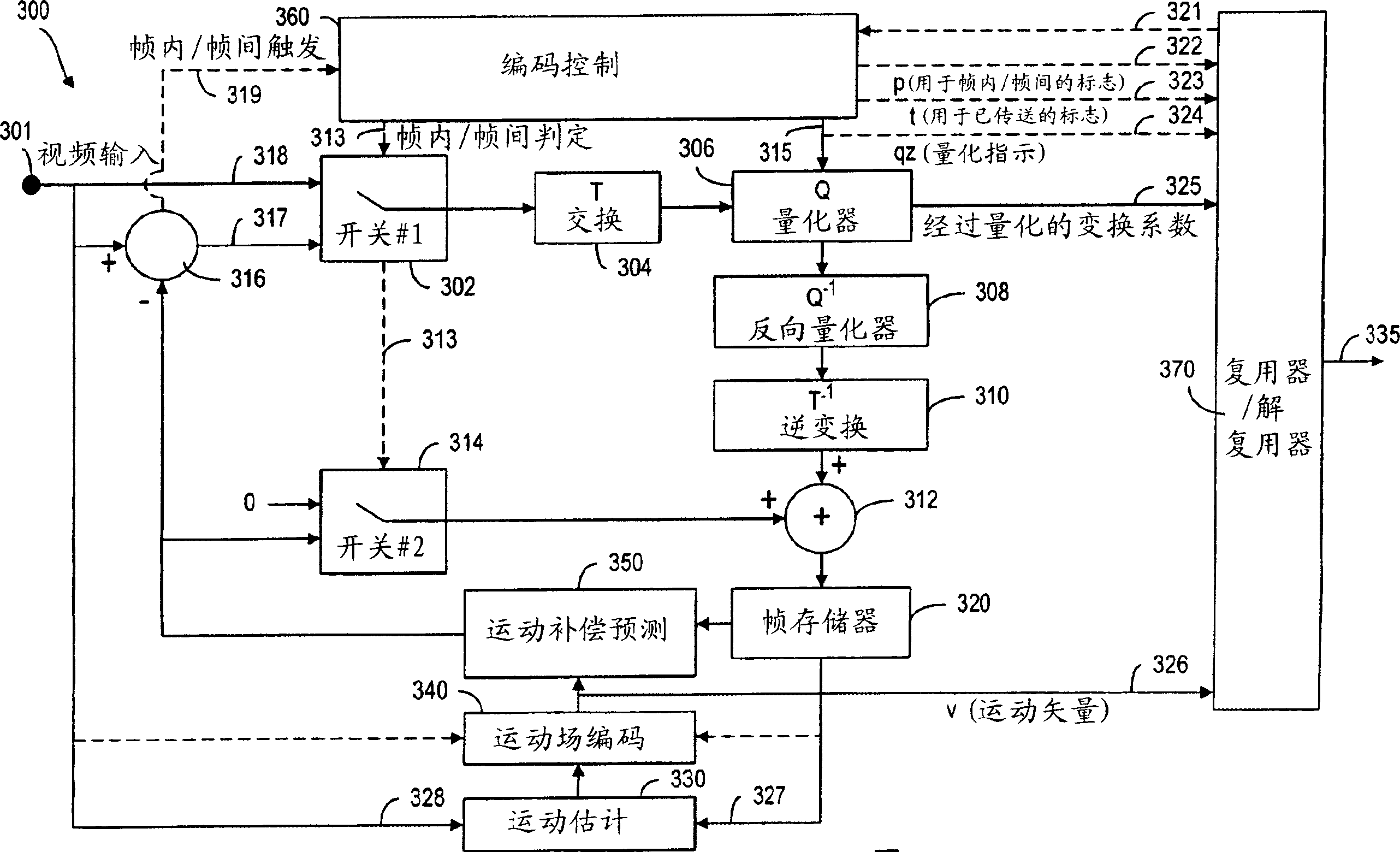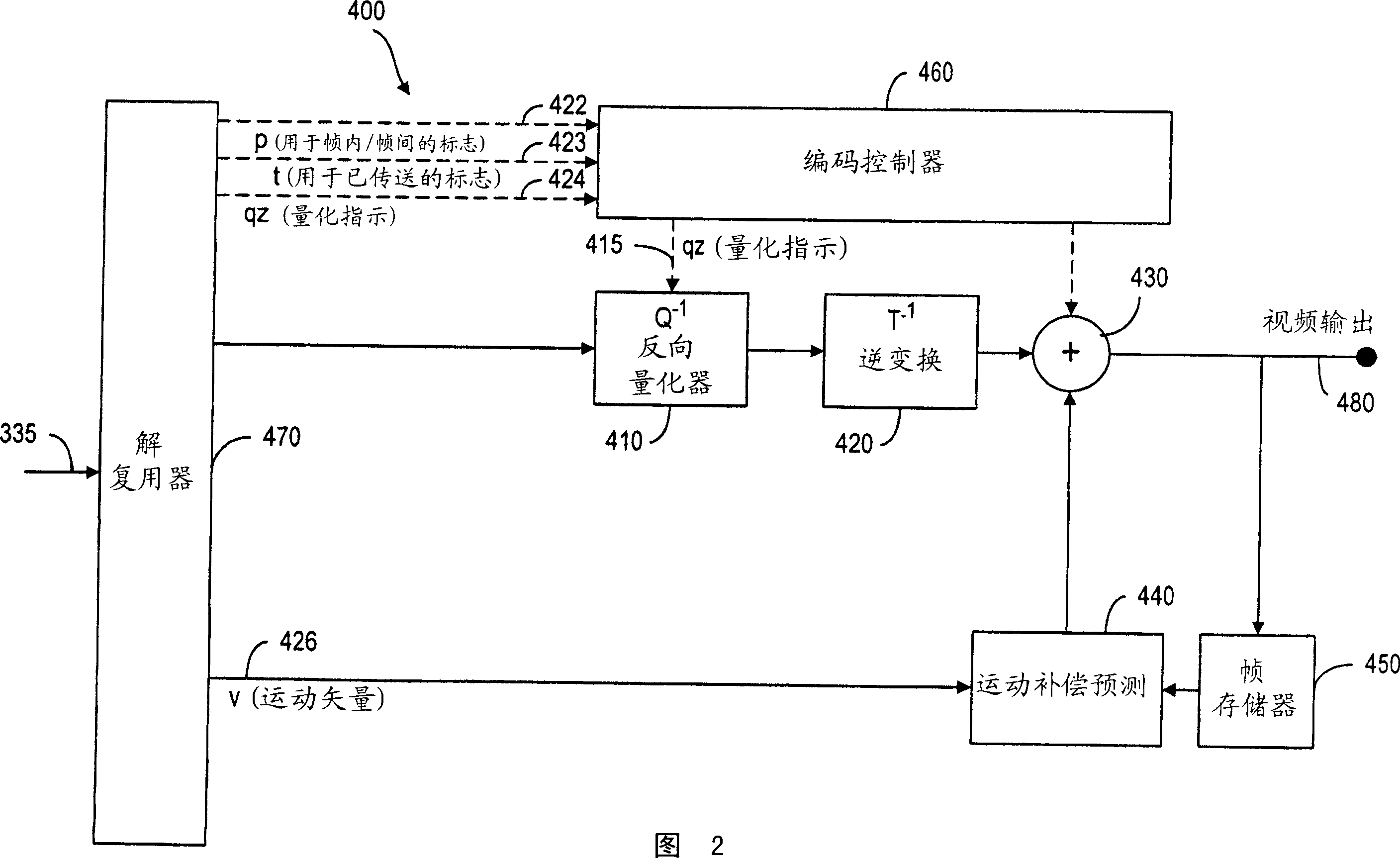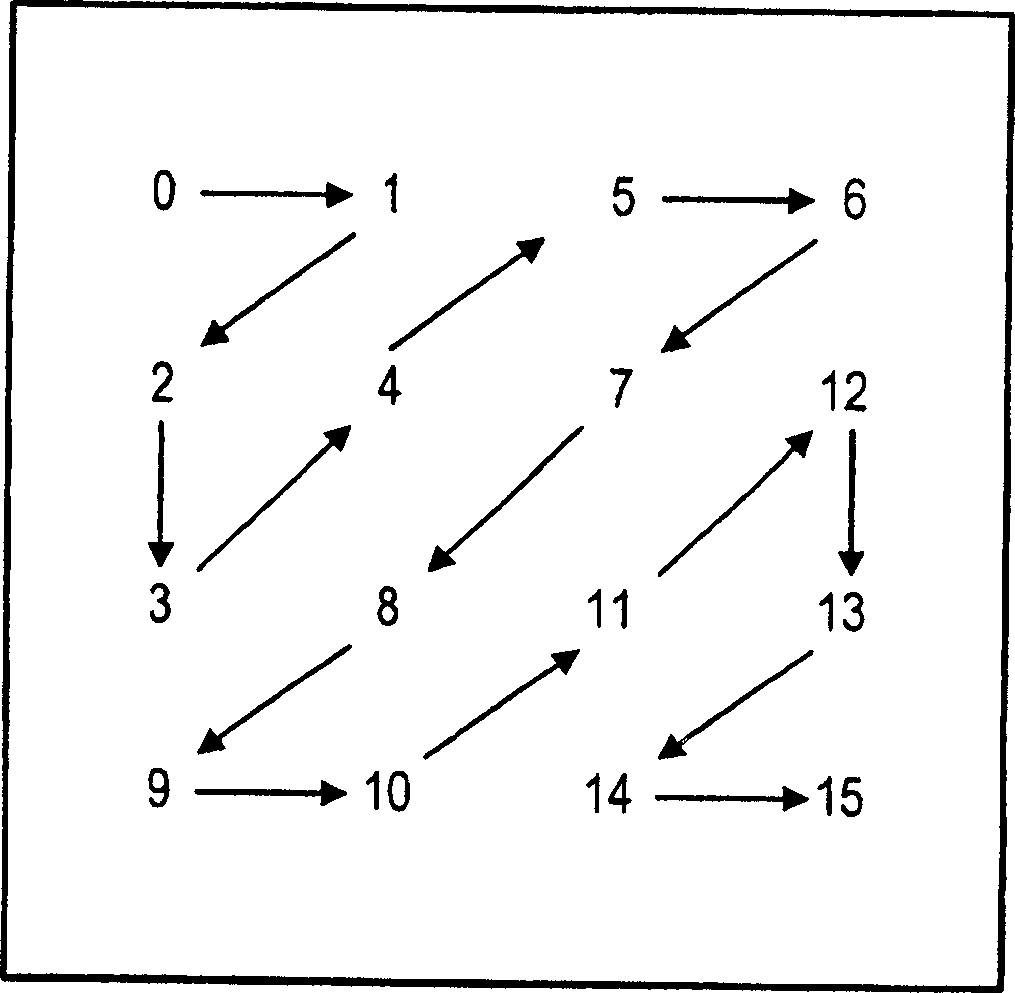Method and system for context-based adaptive binary arithmetic coding
A context and encoder technology, applied in the field of adaptive binary arithmetic coding methods and systems, which can solve problems such as non-optimal methods
- Summary
- Abstract
- Description
- Claims
- Application Information
AI Technical Summary
Problems solved by technology
Method used
Image
Examples
no. 1 example
[0157] The first embodiment of the present invention is described in detail in section 1.1 below. This embodiment relates to a context-based binary arithmetic encoder suitable for use in, for example, the image coding system defined in ITU-T Recommendation H.26L Used in. In this embodiment, the level value generated by performing run-level coding on the quantized coding coefficients of the transform coding block of the image pixel is assigned to the context in consideration of another transform coefficient level belonging to the same block.
[0158] The second embodiment of the present invention is described in detail in Section 1.2. This embodiment also relates to a context-based binary arithmetic encoder for image coding systems, where the system may be, for example, ITU-T Recommendation H.26L The image coding system defined in. In the second embodiment, the run value generated by run-level coding on the quantized DCT transform coefficients of the transform coding block of the i...
PUM
 Login to View More
Login to View More Abstract
Description
Claims
Application Information
 Login to View More
Login to View More - R&D
- Intellectual Property
- Life Sciences
- Materials
- Tech Scout
- Unparalleled Data Quality
- Higher Quality Content
- 60% Fewer Hallucinations
Browse by: Latest US Patents, China's latest patents, Technical Efficacy Thesaurus, Application Domain, Technology Topic, Popular Technical Reports.
© 2025 PatSnap. All rights reserved.Legal|Privacy policy|Modern Slavery Act Transparency Statement|Sitemap|About US| Contact US: help@patsnap.com



